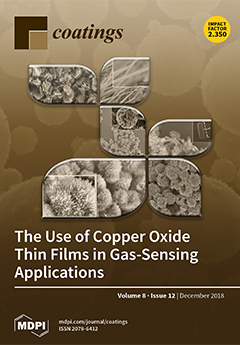Open AccessArticle
Three-Dimensional Thermoelastic Contact Model of Coated Solids with Frictional Heat Partition Considered
by
Tingjian Wang 1,2,3,4,*, Xinxin Ma 1, Liqin Wang 3, Le Gu 3, Longcheng Yin 1, Jingjing Zhang 3,4, Liwei Zhan 4 and Dong Sun 4
1
School of Materials Science and Engineering, Harbin Institute of Technology, Harbin 150001, China
2
School of Mechanical Engineering, Tianjin University of Technology and Education, Tianjin 300222, China
3
School of Mechatronics Engineering, Harbin Institute of Technology, Harbin 150001, China
4
Aero Engine Corporation of China Harbin Bearing Co., Ltd., Harbin 150001, China
Cited by 26 | Viewed by 3870
Abstract
In this paper, a three-dimensional thermoelastic contact model of coated solids with the frictional heat partition considered is developed by introducing a frictional heat partition model. The influence coefficients of the temperature rise, normal displacement and stress components in the three-dimensional thermoelastic contact
[...] Read more.
In this paper, a three-dimensional thermoelastic contact model of coated solids with the frictional heat partition considered is developed by introducing a frictional heat partition model. The influence coefficients of the temperature rise, normal displacement and stress components in the three-dimensional thermoelastic contact model are converted from their corresponding frequency response functions (FRFs) with a conversion method based on the fast Fourier transform (FFT), and the FRFs of solids coated with a homogeneous coating subjected to a coupled action of the mechanical loading and the frictional heat flux on its surface are deduced in the frequency domain by introducing a two-dimensional Fourier integral transform. The contact pressure and the frictional heat partition between the two bodies are solved by employing a fast numerical algorithm based on the conjugate gradient method (CGM) and a discrete convolution fast Fourier transformation (DC-FFT). Comparison between the solutions of the present model and those of a thermoelastic contact model in literature is conducted in order to validate the present model. Several specific conclusions on the effect of the sliding speed, thermoelastic properties and thickness of the coating are drawn based on the result of numerical investigation by utilizing the present model.
Full article
►▼
Show Figures





